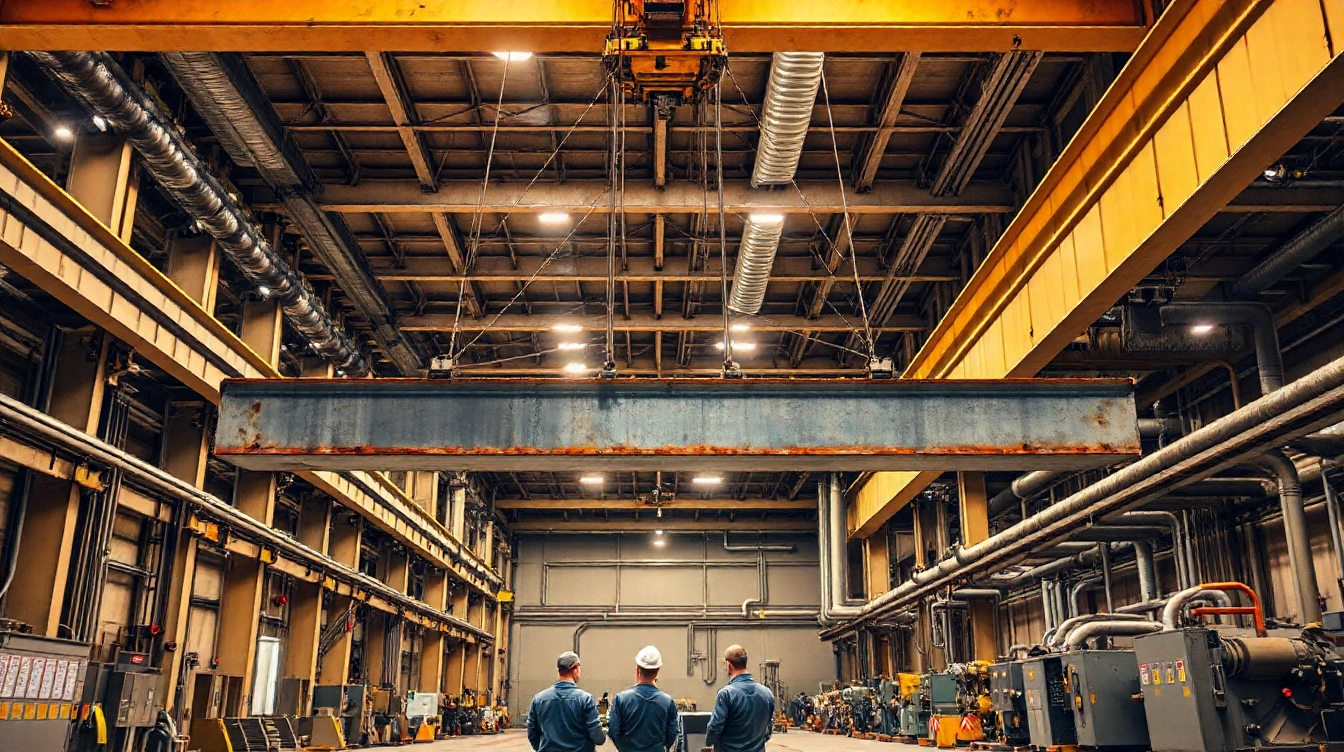Safe overhead crane engineering demands strict adherence to established safety codes like OSHA and ASME. Identifying hazards through thorough risk assessments, paired with precise load calculations, ensures appropriate crane selection and operation. Regular inspections and preventive maintenance prevent equipment failure, while engineering controls and automation enhance operational safety. Comprehensive operator training completes this safety framework, minimizing risks and fostering a culture of responsibility and competence at every level.
Core Safety Principles in Overhead Crane Engineering
Understanding and applying core safety principles is vital for overhead crane safety and operational success.
In parallel : How Can UK Restaurants Optimize Their Menu for Delivery Services?
Adhering to overhead crane safety standards starts with following established industry regulations such as OSHA and ASME codes. These engineering standards provide comprehensive guidelines designed to prevent accidents and ensure secure lifting operations. Compliance with these standards is not optional it is essential to mitigate risks associated with crane operation, including structural failures and load mishandling.
Fundamental engineering practices integrated into overhead crane safety include rigorous design validation, regular inspection schedules, and precise load capacity calculations. These practices support reliable crane performance by addressing potential mechanical stresses and wear factors before they result in failures. Implementing best practices such as real-time monitoring systems also enhances safety by providing immediate feedback on crane conditions.
Also to see : How Can UK Financial Institutions Use AI to Detect and Prevent Money Laundering?
In essence, a commitment to these core principles fosters a robust safety culture. Employers and operators who prioritize adherence to engineering standards and best practices contribute significantly to reducing hazards and safeguarding both personnel and infrastructure. For deeper expertise in this area, resources like Smithwick Engineering offer invaluable insights into mastering the complexities of overhead crane safety engineering.
Conducting Effective Risk Assessments
Conducting a comprehensive crane risk assessment is crucial for maintaining workplace safety during crane operations. The process begins with thorough hazard identification, where all potential dangers related to crane use are systematically examined. This includes scrutinizing the crane’s operating environment, structural integrity, and the tasks being performed. Identifying hazards helps to anticipate issues such as mechanical failure, improper load handling, or environmental factors like poor weather conditions.
After hazards are identified, the next step involves evaluating the risk impact and likelihood. This evaluation assesses how severe the consequences could be if a hazard leads to an incident, alongside the probability of it occurring. Risk assessment experts often use qualitative or quantitative methods to rank risks, prioritizing those that pose the greatest threat to safety and operations. Accurate evaluation enables focused and efficient safety management by directing resources toward the most critical risks.
Finally, implementing systematic control measures is essential to mitigate identified risks. Controls may include engineering solutions like improved crane maintenance, administrative policies such as operator training programs, and protective equipment requirements. Effective control applications are regularly reviewed and updated based on new data or changes in operational conditions. By following such a structured approach to crane risk assessment, organizations can significantly reduce the chances of accidents and promote safer working environments.
Accurate Load Calculations and Crane Selection
Accurately performing load calculation is the cornerstone of safe and efficient crane operation. Determining the safe working load involves assessing the total weight of the lifted object, including any rigging or attachments. This calculation must be precise, accounting for dynamic forces such as wind or movement, which can affect lifting capacities. Underestimating the load can lead to dangerous overloading, risking catastrophic equipment failure.
When it comes to crane selection, the choice must align strictly with the calculated load requirements. Different cranes offer varied lifting capacities, and selecting a crane with insufficient capacity increases the risk of mechanical stress and operational hazards. Engineers often assess load distribution, reach, and lifting height to match the crane type with the task demands, ensuring optimal performance and safety.
To prevent overloading, operators rely on accurate load calculations paired with cranes designed and rated for specific loads. Failure to adhere to these standards can lead to mechanical failure, endangering lives and causing costly downtime. Understanding and applying these principles is integral to mastering overhead crane engineering and ensuring safer operations.
Regular Inspection Routines and Preventive Maintenance
Maintaining crane inspection schedules is fundamental for ensuring the safe and efficient operation of overhead cranes. Regular inspections are designed to identify wear, damage, or any deviation from standard operating conditions before they escalate into serious problems. By adhering to rigorous safety protocols, operators can reduce downtime and extend the crane’s operational lifespan.
Scheduling regular crane inspections involves creating a documented timetable that defines inspection frequency, frequently based on hours of operation, lifting cycles, or calendar time. Each inspection should be comprehensive, focusing on critical areas such as structural integrity, cables, brakes, and control systems. These components are prone to stress and degradation; for example, frayed cables or worn brake pads directly compromise operational safety and must be addressed promptly.
Preventive maintenance complements routine inspections by proactively servicing parts prone to failure. This includes lubrication of moving parts, replacement of worn components before failure, and recalibration of control systems to maintain precision. Preventive maintenance ensures that minor issues detected during inspections do not develop into costly repairs or unsafe conditions. Following these measures consistently supports compliance with regulatory standards and fosters a culture of safety around crane operations.
Engineering Control Measures for Operational Safety
Effective control measures are foundational to ensuring operational safety in engineering environments. These measures encompass various safety features designed to mitigate hazards and prevent accidents. One primary approach involves integrating physical safeguards such as barriers, guards, and interlocks that restrict access to dangerous components or areas, reducing the risk of human error or unintended contact.
In addition to physical protections, advanced automation plays a significant role. Automated systems monitor operational parameters continuously and can trigger emergency shutdown features if they detect abnormalities such as overloads, overheating, or mechanical failure. These automated responses provide a rapid and reliable method to contain potential safety incidents without relying solely on human intervention.
Moreover, implementing environment-specific safety protocols tailors control measures to the unique risks inherent in each operational setting. For instance, a manufacturing plant might require different safety devices and automation settings than a warehouse handling overhead cranes. This specificity ensures that control measures address the exact conditions under which equipment operates, further enhancing safety.
Together, these engineering control measures represent a multi-layered defense. Combining physical safeguards, sophisticated automation, and targeted protocols creates a resilient system that prioritizes operator safety and operational reliability. For a comprehensive approach to advanced safety engineering, resources like Smithwick Engineering provide valuable insights into mastering these control measures effectively.
Comprehensive Operator Training and Certification
Effective operator training and crane certification are fundamental to mastering overhead crane operations and ensuring workplace safety. Structured training programs must align with industry standards, providing operators with in-depth knowledge and practical skills. These programs typically cover equipment operation, safety protocols, emergency procedures, and maintenance basics to develop true competence.
Ongoing skills assessment is critical in maintaining operator proficiency. Regular evaluations and recertification requirements help identify skill gaps and reinforce safe practices. This continuous approach ensures operators remain confident and capable of handling complex lifting tasks under varying conditions.
Beyond technical skills, fostering a safety-oriented workplace culture is essential. Training should emphasize risk awareness and encourage reporting potential hazards. When organizations prioritize competency development alongside certification, they minimize accidents and improve operational efficiency.











